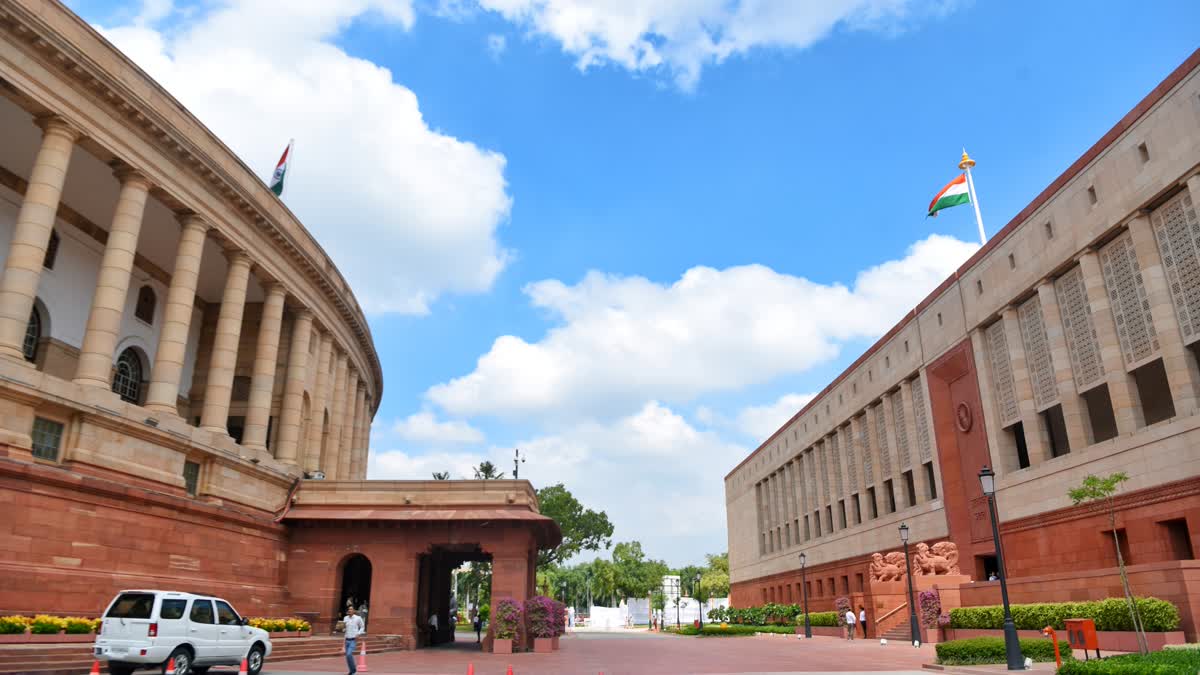New Delhi: In a momentous and symbolic transition, the Indian Parliament is bidding farewell to its venerable old building, the Central Hall, and moving to a state-of-the-art facility, the new Parliament House, situated on Kartavya Path in the heart of Delhi. This historic shift was marked by a commemorative photo session.
A ceremonial gathering within the Central Hall of the old parliamentary building, attended by distinguished figures, including former Prime Minister Manmohan Singh, JMM leader Shibu Soren, and BJP MP Maneka Gandhi, is scheduled for 11 am.
The highlight of this transition was Prime Minister Narendra Modi's symbolic journey from the old to the new Parliament House, clutching a copy of the Indian Constitution. Elected representatives, demonstrating unity, will march alongside him on foot before convening in their respective chambers within the new parliament. This momentous occasion not only signifies a change in location but also symbolizes a fresh chapter in India's democratic journey.
The old parliamentary building, a venerable structure inaugurated in 1927, has played a pivotal role in the nation's history. It hosted iconic events such as Jawaharlal Nehru's historic "midnight hour" speech and the adoption of the Indian Constitution. However, as India evolved and modernized, the limitations of this historic structure became evident, particularly in its lack of modern information technology facilities and office accommodations for Members of Parliament.
In recognition of the historical significance of the old building, designed by British Architects Sir Edwin Lutyens and Herbert Baker, it will be meticulously preserved as an invaluable archaeological asset to the nation. This preservation effort ensures that future generations will be able to appreciate the architectural and historical legacy of the building.
Prime Minister Modi, on Monday, in his address at the inaugural session of parliament's special gathering, paid tribute to the old building, stating, "As we depart this building, we carry with us the hope for the future... Today is a day to remember the 7,500 MPs who have served here... I salute every brick of this building." He also reminisced about the transformative milestones achieved during the past nine years, including the historic revocation of Article 370 and the introduction of the "One Nation One Tax" Goods and Services Tax (GST).
The new Parliament House, inaugurated by Prime Minister Modi in May, is a state-of-the-art facility designed to meet contemporary requirements. It can comfortably accommodate 888 members in the Lok Sabha chamber and 300 in the Rajya Sabha chamber, with a capacity for 1,280 MPs during joint sessions in the Lok Sabha chamber. This modern facility is equipped with advanced technology and infrastructure, ensuring that it can efficiently support the functioning of the Indian Parliament for years to come.
One of the significant improvements in the new Parliament House is the provision of generous office space for each Member of Parliament. They will have a spacious 40-square-meter office space in the refurbished Shram Shakti Bhawan, a project expected to be completed by 2024. Additionally, the national archives, housing a treasure trove of historical documents, will make the transition from the old building to the new one, ensuring the preservation of India's rich history.
Also read- Decks cleared for Women's Reservation Bill, PM Modi likely to announce tomorrow
The new Parliament House, a four-story architectural marvel, boasts a substantial built-up area spanning 64,500 square meters. It features three prominent entrances—Gyan Dwar, Shakti Dwar, and Karma Dwar—each designated for specific categories, including VIPs, MPs, and visitors. These entrances are adorned with ornate composite animal figures, adding to the grandeur of the structure.
The architects responsible for this modern masterpiece drew inspiration from India's rich heritage, incorporating elements from temples and ancient scriptures into the design. One of the most striking features is the Jan Janani Janmabhoomi wall, adorned by grassroots artists, which pays homage to the diverse culture and traditions of India. Additionally, three galleries within the edifice are dedicated to showcasing the country's rich heritage of music, crafts, and architecture, creating a vibrant celebration of India's cultural legacy.
As the Indian Parliament transitions to its new abode, it carries with it not only the legacy of its past but also the promise of a vibrant and progressive future. The move to the new Parliament House signifies India's commitment to modernizing its democratic institutions and ensuring they are equipped to meet the challenges of the 21st century. This historic transition encapsulates the spirit of a resurgent India, ready to embrace the future while cherishing its rich history and traditions.



